Sustainable: Definition, Meaning, and Real-World Examples
Imagine a world where every choice you make affects the environment. The term sustainable means more than just caring for the planet. It’s about making choices that protect our world for the future.
Living sustainably means thinking about the future in everything we do. It’s not just about recycling or cutting down on waste. It’s about making sure our actions are good for the planet, our economy, and our communities.
Sustainability is everywhere, from clean energy to farming that cares for the soil. As you learn more, you’ll see how we can all make a difference together.
Key Takeaways
- Sustainability is a multifaceted approach to preserving planetary resources
- Individual choices contribute significantly to global environmental health
- Sustainable practices integrate environmental, economic, and social perspectives
- Technology and innovation play crucial roles in advancing sustainability
- Every sector—from agriculture to business—can implement sustainable strategies
Understanding the Core Concept of Sustainability
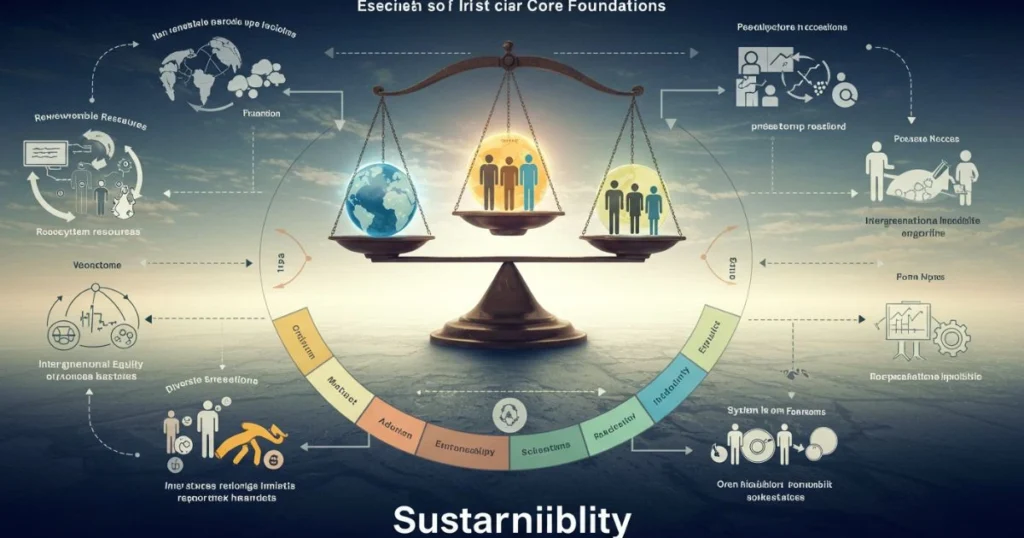
Sustainability is more than just a buzzword. It’s a way to tackle global problems by balancing nature, economy, and society. When we talk about sustainable practices, we’re looking at ways to keep the planet and people healthy for the long run.
The idea of sustainable development has been around for a long time. It’s about managing resources and protecting the environment. People have always tried to keep a balance between what we do and nature.
Historical Evolution of Sustainability
The story of sustainability has been long and varied. Important moments include:
- Indigenous cultures’ traditional ways of managing resources
- Early conservation efforts in the late 19th century
- United Nations environmental meetings in the 1970s
- Global sustainable development goals set in 2015
“Sustainability is not about being perfect, but about making better choices every day.” – Environmental Economist, Dr. Rachel Green
Key Components of Sustainable Practices
Sustainable practices usually focus on three main areas:
- Environmental Protection: Keeping natural systems safe
- Economic Viability: Building strong, lasting economies
- Social Equity: Making sure resources are shared fairly
Modern Interpretations of Sustainability
Today, sustainability goes beyond old ideas. It includes new technologies, circular economies, and ways to see how everything is connected.
Understanding sustainability can lead to real change. It’s about using practices that care for the planet while helping people grow and thrive.
The Meaning Sustainable: A Comprehensive Overview
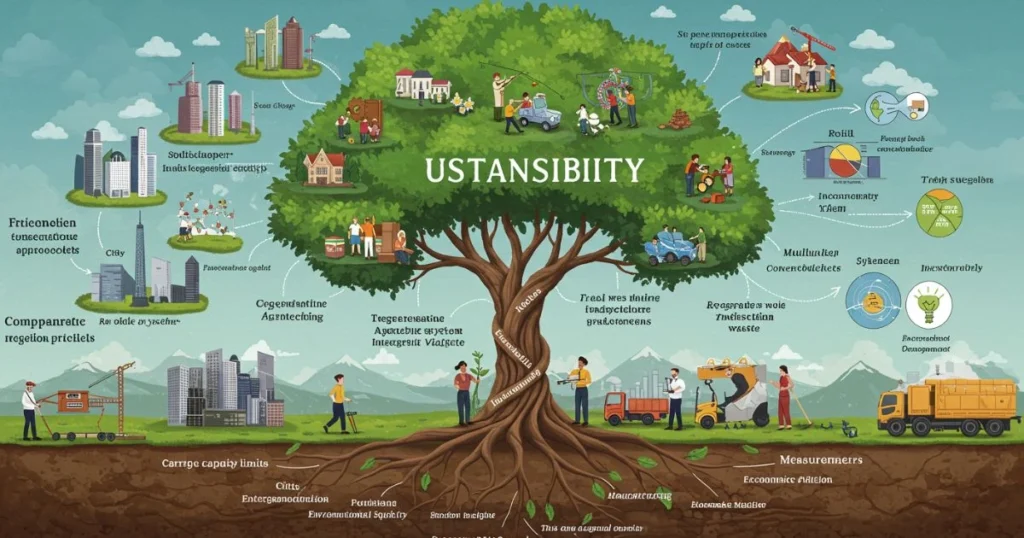
Understanding what sustainability means is more than just caring for the environment. It’s about finding a balance between what we need and protecting nature. When you look into sustainability, you see a big picture that affects our daily lives.
Sustainability is about making systems that can keep going without running out of important resources. It has three main parts:
- Environmental Protection: Keeping nature safe and reducing harm to the environment
- Economic Viability: Creating economic plans that grow over time without using up all resources
- Social Responsibility: Making sure everyone has fair access to resources and chances
Sustainable actions help us today while also thinking about tomorrow. It needs new ideas, careful planning, and making choices that are good for everyone.
Sustainability can be applied in many areas, such as:
- Agriculture and food production
- Energy systems
- Urban development
- Business operations
- Personal lifestyle choices
By following sustainable practices, we can help make the world a better place for everyone.
Environmental Pillars of Sustainability
Sustainable practices are key to protecting our planet. They help keep our ecosystems healthy. This goes beyond just saving nature; it tackles big challenges that affect us all.
Environmental sustainability is about keeping our world healthy. By using sustainable strategies, you help protect our planet’s systems.
Resource Conservation and Management
Managing resources well is vital for a sustainable future. How we use and protect nature matters a lot:
- Use less water with new technologies
- Choose renewable energy to cut down on fossil fuels
- Recycle and support the circular economy
“Nature is not a place to visit. It is home.” – Gary Snyder
Biodiversity Protection
Keeping biodiversity healthy is crucial. Sustainable actions help save ecosystems and prevent species loss. By backing conservation, you help keep our planet’s life web strong.
- Save endangered places
- Support wildlife programs
- Lessen our impact on nature
Climate Change Mitigation
Climate change is a big challenge. Your actions can help fight it:
- Lower your carbon footprint
- Back clean energy projects
- Push for green policies
Knowing what sustainability means is about seeing our link to nature. It’s about taking steps to protect our planet’s resources for everyone.
Economic Aspects of Sustainable Development
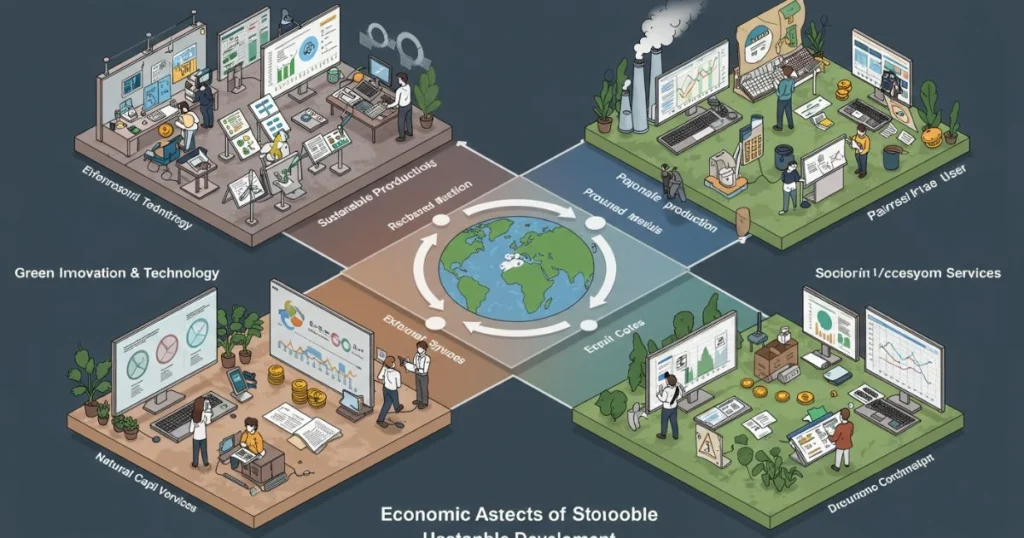
Sustainable economic development is key to balancing money growth with caring for the planet. It means finding ways to make money without harming nature. This approach also helps society in the long run.
The heart of sustainable economics includes several important ideas:
- Creating circular economy models that cut down on waste
- Creating jobs that help the environment
- Building renewable energy systems
- Supporting new green technologies
Green investments are now more appealing to businesses and people who invest. Companies that go green often do better financially. They save money and improve their image. They see that being green is not only right but also smart for business.
Learning about sustainable economic development can change how businesses work. By focusing on using resources wisely, companies can:
- Save money on operations
- Draw in customers who care about the planet
- Stay safe from future economic problems
- Find new ways to make money
Economic sustainability is more than just saving the environment. It’s about building strong, flexible economies that can handle change. Businesses that adopt green practices are seen as leaders in their fields.
Social Dimensions of Sustainability
Sustainability is more than just caring for the environment. It also means creating fair and balanced communities. Understanding sustainable social development shows us how people, resources, and well-being are connected.
Social sustainability works to build strong communities. It focuses on meeting basic human needs and fighting for social justice. The goal is to support dignity, diversity, and equal chances for everyone.
Community Engagement
Getting your community involved is key to sustainable growth. Your local community can make a big difference by:
- Working together to make decisions
- Joining in on planning efforts
- Starting new social projects
- Having open and fair discussions
Cultural Preservation
Keeping cultural heritage alive is vital. Cultural sustainability makes sure traditional knowledge and identities are valued. It helps them thrive even as we face new challenges.
Equitable Access to Resources
A sustainable society shares important resources fairly. This means making sure everyone has:
- The same chances to learn
- Access to healthcare
- Opportunities to succeed financially
- Strong social support
Sustainable development is all about making life better for people. It does this while protecting the environment and respecting different cultures.
Sustainable Practices in Agriculture and Farming
Sustainable farming is a new way to grow food that’s good for the planet, makes money, and helps people. Learning about sustainable farming can change how we grow food for the future.
Today’s sustainable farming uses smart strategies to protect the environment and grow more food:
- Organic crop rotation techniques
- Water conservation methods
- Natural pest management
- Soil health preservation
Precision agriculture is a big change in farming. It uses new tech like GPS and drones to use resources better. Smart farming means water and fertilizer are used just where they’re needed, reducing harm to the environment.
Permaculture is another cool way to farm. It’s like nature, with systems that work together and don’t waste anything. Permaculture is all about being kind to the planet and using resources wisely.
The future of agriculture lies in understanding and implementing sustainable practices that work in harmony with nature.
Regenerative agriculture is becoming more popular. It’s about making soil better, fixing damaged land, and helping more life thrive. This way of farming not only grows food but also makes the environment healthier.
- Reduced chemical interventions
- Enhanced carbon sequestration
- Improved farm resilience
By choosing sustainable farming, you help make farming better for the planet and for people. It’s a way to feed more people without harming the environment.
Corporate Sustainability and Business Applications
Today, businesses are changing how they think about being sustainable. They see that making money and caring for the planet can go hand in hand. Companies are now making sustainable practices a big part of what they do, knowing it’s key for lasting success.
The business world is moving towards green practices. This means finding a balance between making money and taking care of the environment. It’s about creating value for everyone, including the planet.
Green Business Models
New ways of doing business are emerging. These include:
- Circular economy approaches
- Renewable energy investments
- Zero-waste manufacturing processes
- Eco-friendly product design
Sustainable Supply Chains
Companies are making their supply chains more sustainable. This means:
- Reducing carbon footprint
- Selecting environmentally responsible suppliers
- Implementing transparent sourcing practices
- Minimizing waste throughout production
Corporate Social Responsibility
Corporate social responsibility is now a big part of being sustainable. Companies understand their impact on communities and the environment. They’re creating programs that:
- Support local communities
- Promote ethical labor practices
- Invest in environmental conservation
- Ensure fair workplace conditions
Sustainability is no longer optional—it’s a business imperative for future success.
Sustainable Living: Personal Choices and Impact
Living sustainably is more than just knowing what it means. It’s about making choices that help the planet. Your everyday decisions can make a big difference for the future.
Begin by making your home more eco-friendly. Here are some easy steps:
- Use LED bulbs to cut down on energy
- Save water with smart techniques
- Recycle to reduce waste
- Choose appliances that save energy
Transportation is also key to living sustainably. Look into ways to travel that are better for the environment:
- Ride a bike for short trips
- Take public transport
- Carpool with friends or family
- Think about electric or hybrid cars
Your buying habits play a big role in a sustainable future. Mindful purchasing means choosing brands that care about the planet. Pick products with less packaging and buy things that last longer.
Every small action contributes to significant environmental transformation.
Getting involved in your community can help too. Join local groups, help with green projects, and teach others about living sustainably.
Technology’s Role in Advancing Sustainability
Technology is now a key player in finding solutions for our planet’s big environmental problems. As worries about climate change grow, new tech is becoming essential for making systems and practices more sustainable.
New tech is changing how we save the environment and protect it. These advanced solutions aim to lessen harm to nature while boosting efficiency in many areas.
Innovations in Green Technologies
Green tech is changing sustainable development with new ideas:
- Solar and wind energy systems with better storage
- Advanced recycling tech that cuts down waste
- Smart grid systems for better energy sharing
- Electric vehicle setup with fast charging
Smart Solutions for Conservation
Conservation tech is giving us new ways to protect the environment:
- AI for watching over endangered species
- Satellite tracking to stop deforestation
- Smart farming to use less resources
- Water management with IoT sensors
By using technology, we can create sustainable ways to protect our planet and help human progress. The future of caring for our environment depends on our ability to keep innovating and using tech to tackle global issues.
Global Initiatives and Policy Frameworks
Sustainable development is now a top global priority. International groups are working hard to create detailed plans to tackle environmental issues. The United Nations is leading these efforts, helping countries adopt greener practices.
Important global projects have started to tackle big environmental problems:
- UN Sustainable Development Goals (SDGs)
- Paris Agreement on Climate Change
- Global Environmental Protocols
The idea of sustainable development goes beyond just saving the planet. These global plans aim to find a balance between economic growth, fairness, and protecting nature. Countries are now using these strategies in many areas.
International policies focus on key areas:
- Lowering carbon emissions
- Protecting nature’s variety
- Boosting green energy
- Ensuring fairness for all
It’s important to understand these global efforts. They show how countries work together to solve big problems. By matching national plans with global standards, governments can make real changes for the environment and people.
*Sustainable development is not just an environmental goal, but a comprehensive approach to global progress.*
As these plans keep getting better, they guide us toward a stronger and fairer world. Each step forward is a big move toward a greener future for our planet.
Measuring and Tracking Sustainability Progress
It’s key for companies and governments to track their green efforts. Knowing how well you’re doing helps plan for the future. This is crucial for lasting success.
Sustainable metrics are more than just money talks. They show how well you’re doing for the planet and people. This helps everyone see how close you are to your green goals.
Key Performance Indicators for Sustainability
Companies look at certain signs to see if they’re being green:
- Carbon emissions reduction
- Water consumption levels
- Renewable energy adoption
- Waste management efficiency
- Social impact measurements
Sustainability Reporting Standards
There are global rules for green reporting. The top ones are:
- Global Reporting Initiative (GRI)
- Sustainability Accounting Standards Board (SASB)
- UN Sustainable Development Goals (SDGs)
“What gets measured gets managed” – Peter Drucker
Knowing these metrics helps you see what’s working and what’s not. It lets you make real changes in your company or community.
Conclusion
Sustainability is more than just a trend; it’s a vital way to tackle big global problems. Learning about sustainable practices can change how we live, work, and interact with each other. Every effort, from sustainable farms to corporate actions, helps make our world stronger.
We all need to work together to achieve sustainability. You can make a big difference by choosing eco-friendly options, backing green tech, and pushing for better practices. Small steps like reducing waste, supporting local farms, or buying wisely can add up to big changes.
As we go forward, it’s key to mix sustainable ideas into all areas of life. New tech, policies, and creative solutions will keep us moving forward. By staying up-to-date and dedicated, you can help build a future that’s good for the planet, people, and the economy.
The journey to a sustainable world is always evolving. Your ongoing learning and involvement are essential to solving big global issues. Let’s seize the chance to make a positive impact and build a better world for all of us, now and in the future.
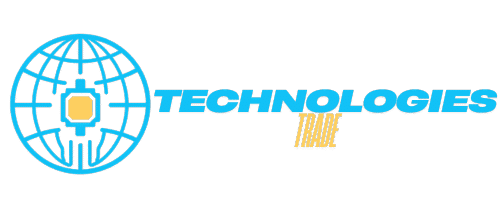
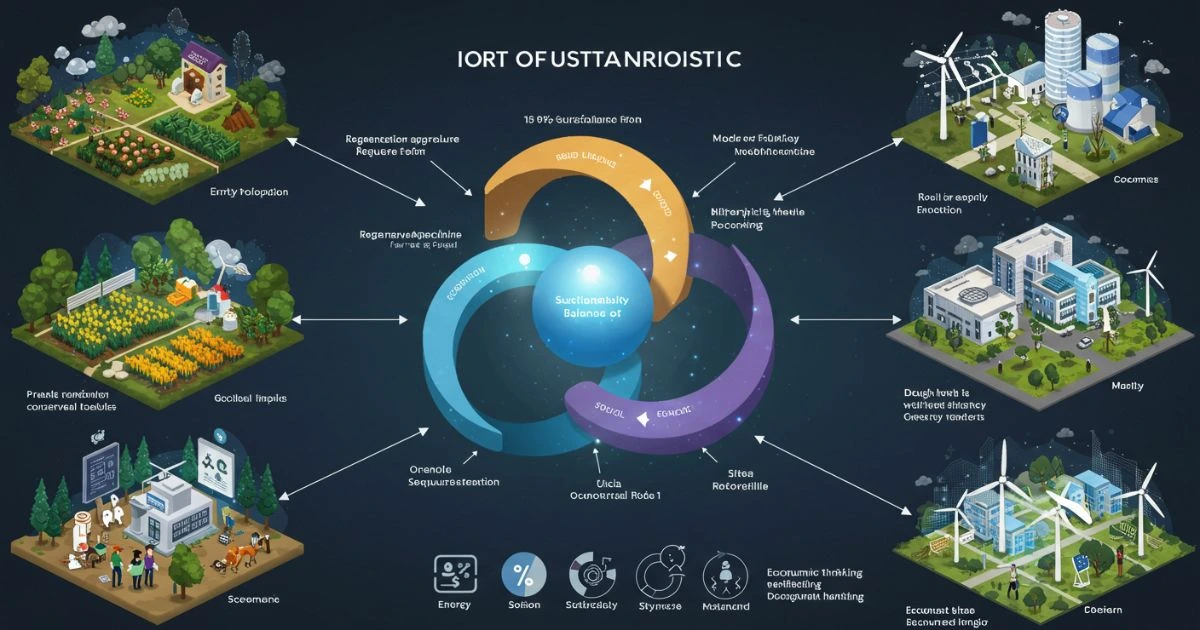
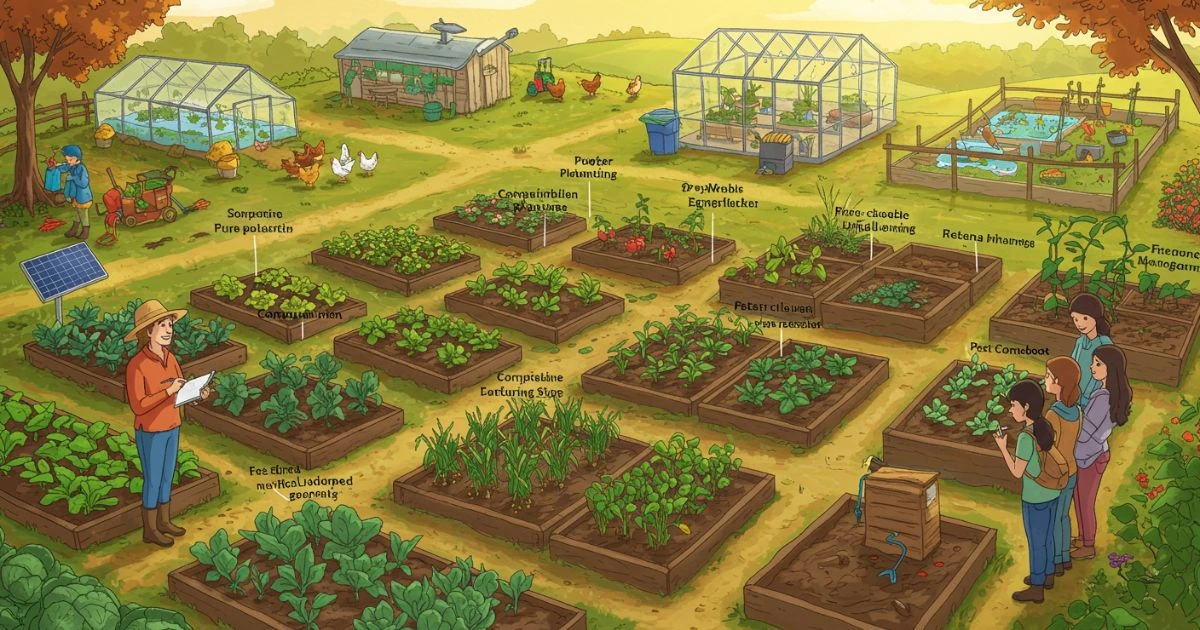
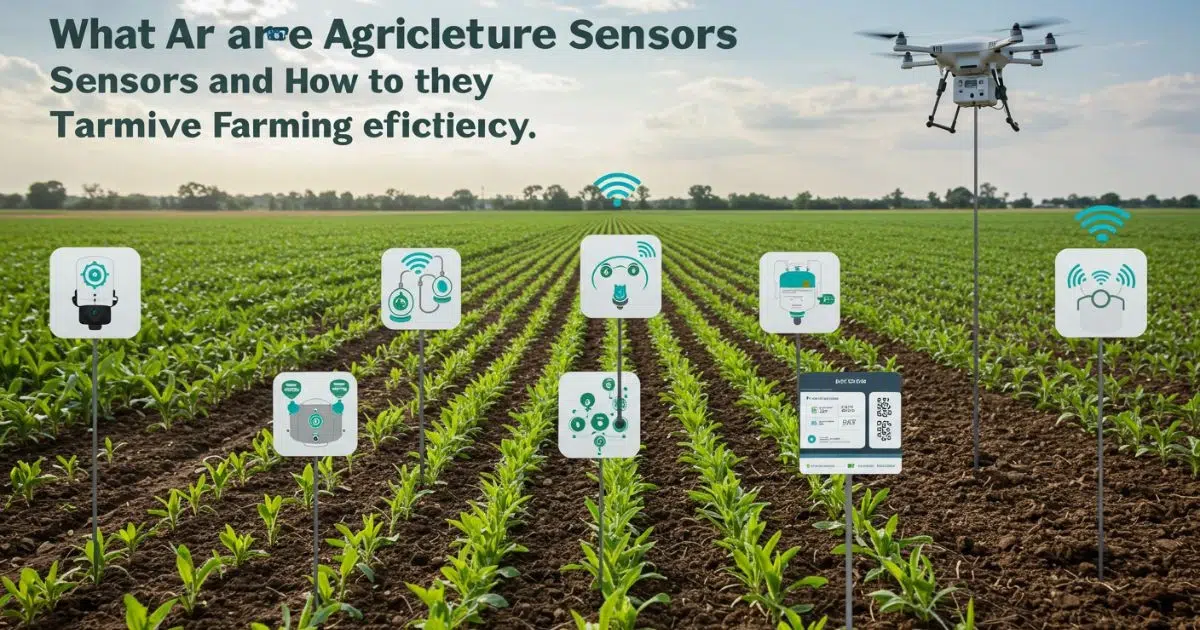
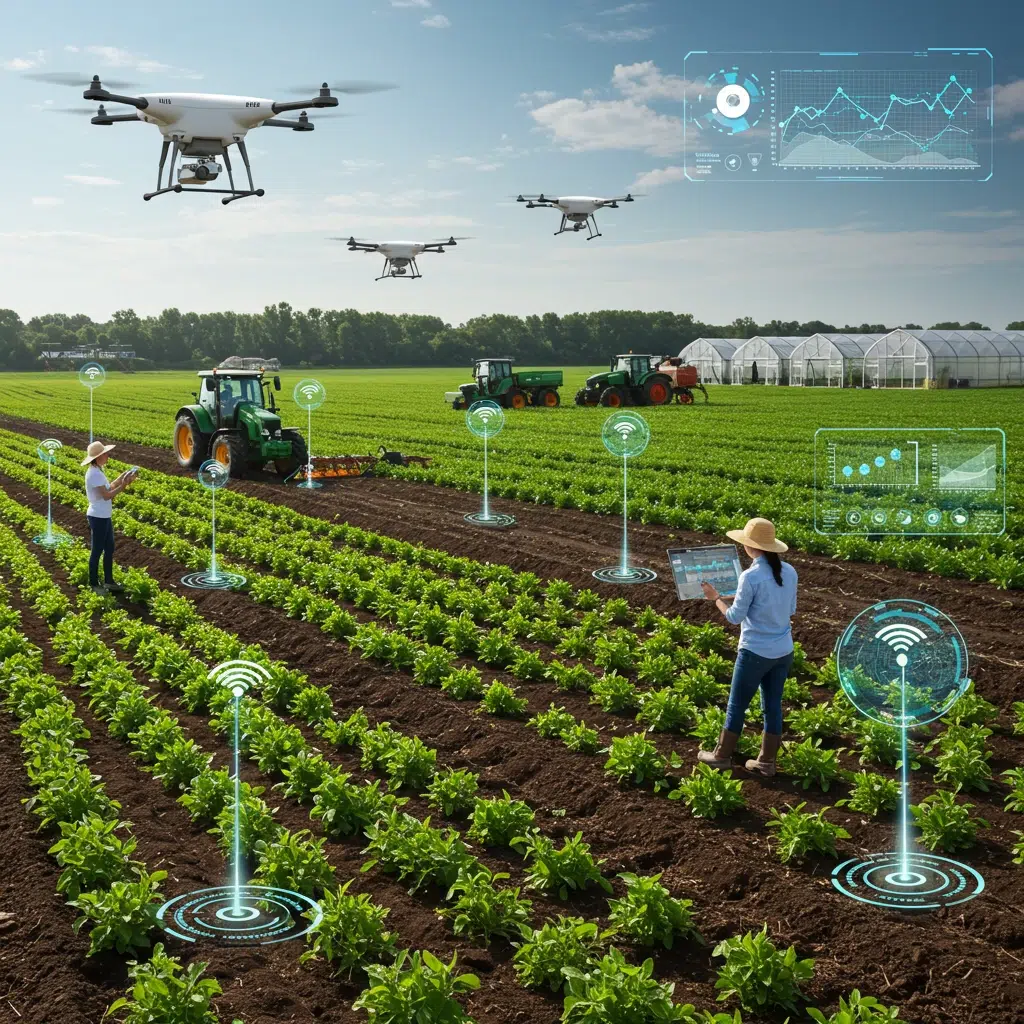
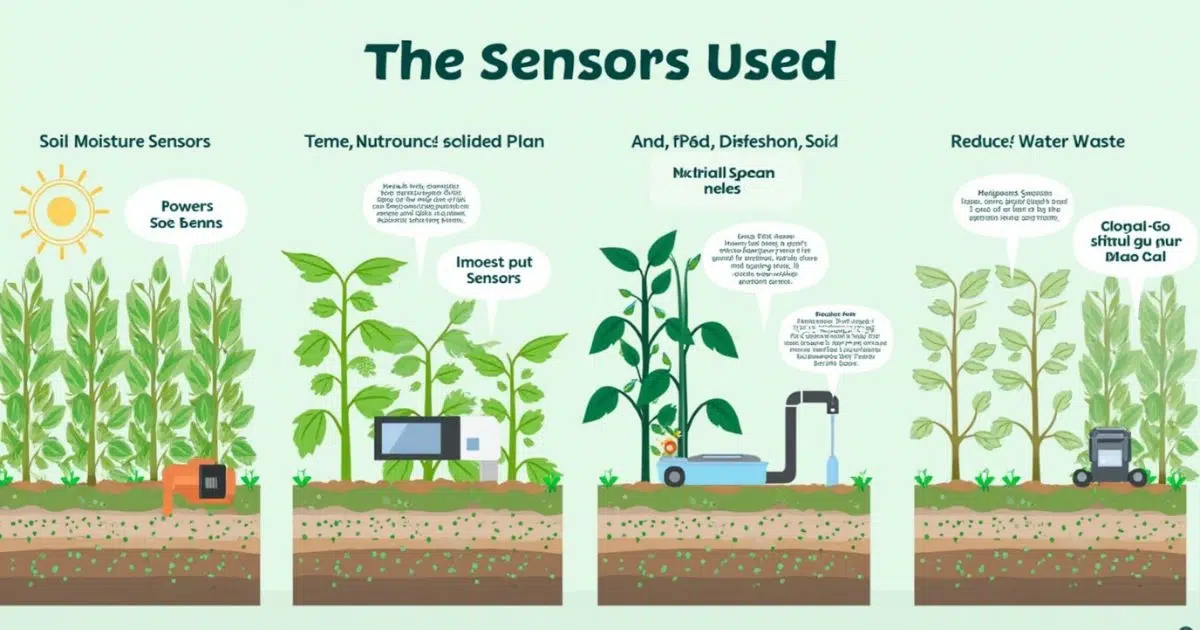
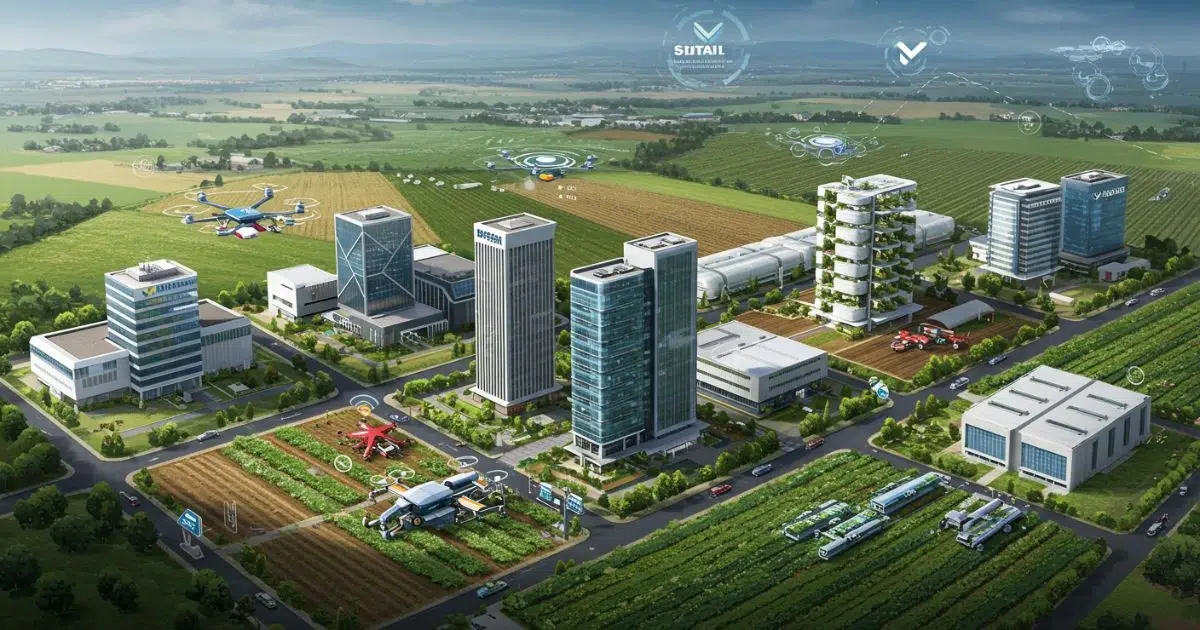
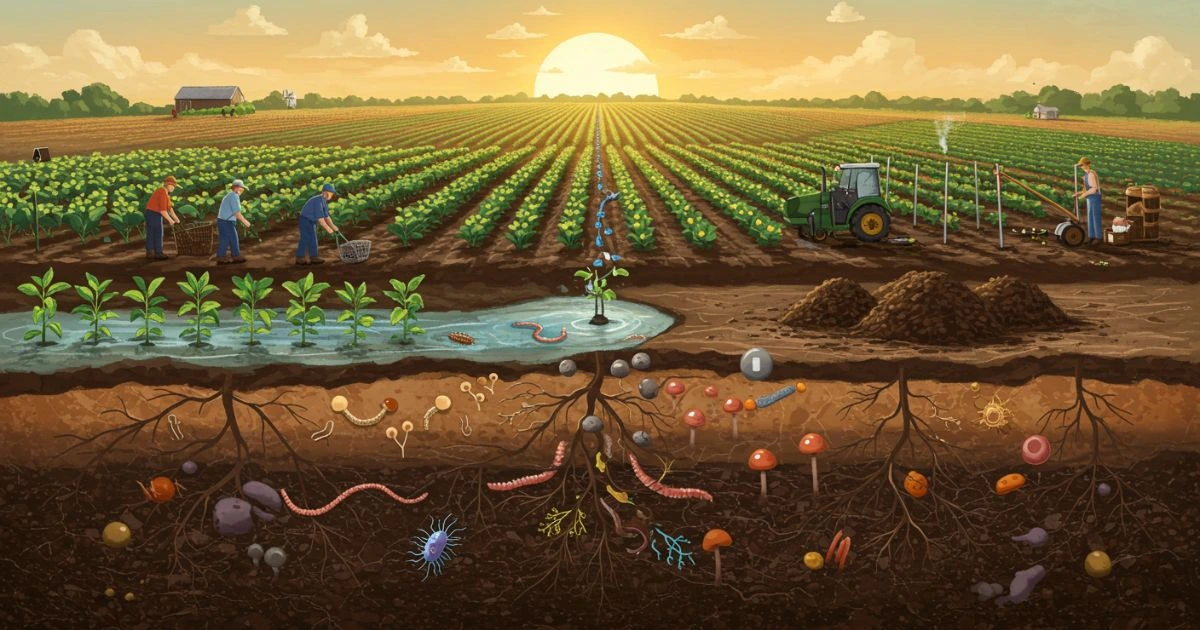
Leave a Reply